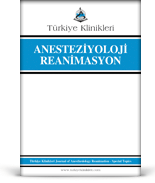Objective: We aimed to assess the impact of endotracheal tube (ETT) fixation methods routinely used in our clinic, on displacement in prone-positioned patients under general anesthesia. Material and Methods: One of four different methods (ThomasTM tube holder, nonadhesive tape, X-shape adhesive tape, and Reinforced adhesive tape) was used for ETT fixation. The distance between the tip of the ETT and the carina was measured using a fiberoptic bronchoscope (FOB) in the supine position. The patients were then placed in the prone position, and the FOB examination was repeated. The difference between these two measurements, obtained in the supine and prone positions, indicated the ETT displacement due to position changes. Clinically significant displacement was defined as ETT movement of >1 cm in either direction. Results: A total of 80 patients were included in this study. ETT displacement occurred in 31 (38.75%) patients during the transition to the prone position. The least displacement was observed with the ThomasTM tube holder (0.2±0.52). Reinforced adhesive tape showed similar results to the ThomasTM tube holder (0.4±1.19). The highest ETT displacement was observed with X-shape adhesive tape (1.6±1.79) and nonadhesive tape (0.95±1.05), respectively. Clinically significant ETT movement (>1 cm) occurred in 17 patients (21.25%). The occurrence rates were 5% (1/20) with the ThomasTM tube holder, 15% (3/20) with Reinforced adhesive tape, 25% (5/20) with nonadhesive tape, and 40% (8/20) with X-shape adhesive tape. Conclusion: The ThomasTM tube holder significantly reduced ETT mobility in patients positioned in the prone position.
Keywords: Anesthesia; endotracheal intubation; prone position
Amaç: Bu çalışmada, kliniğimizde rutin olarak kullanılan endotrakeal tüp (ETT) fiksasyon yöntemlerinin, genel anestezi altında pron pozisyondaki hastalarda ETT yer değiştirmesi üzerindeki etkisini değerlendirmeyi amaçladık. Gereç ve Yöntemler: ETT fiksasyonu için 4 farklı yöntemden (Thomas tüp tutucu, yapışkan olmayan bağ, X şeklinde yapışkan bant ve güçlendirilmiş yapışkan bant) biri kullanıldı. Supin pozisyonda, ETT ucu ile karina arasındaki mesafe fiberoptik bronkoskop (FOB) ile ölçüldü. Daha sonra hastalar pron pozisyona alındı ve FOB muayenesi tekrarlandı. Supin ve pron pozisyonunda elde edilen bu iki ölçüm arasındaki fark, pozisyon değişikliklerine bağlı ETT yer değişikliğini gösterdi. Klinik olarak anlamlı bir yer değiştirme, ETT'nin her iki yönde de >1cm hareketi olarak tanımlandı. Bulgular: Bu çalışmaya toplam 80 hasta alındı. Pron pozisyona geçişte, 31 (%38,75) hastada ETT yer değişikliği meydana geldi. En az ETT yer değişikliği Thomas tüp tutucu ile gözlendi (0,2±0,52). Güçlendirilmiş yapışkan bant yöntemi (0,4±1,19) Thomas tüp tutucuya yakın sonuç verdi. En yüksek ETT yer değişikliği sırasıyla X şeklinde yapışkan bant yöntemi (1,6±1,79) ve yapışkan olmayan bağda (0,95±1,05) görüldü. Klinik olarak anlamlı ETT hareketi (>1 cm), 17 (%21,25) hastada tespit edildi; bu oran Thomas tüp tutucuda %5 (1/20), güçlendirilmiş yapışkan bant yönteminde %15 (3/20), yapışkan olmayan bağda %25 (5/20) ve X şeklinde yapışkan bant yönteminde %40 (8/20) idi. Sonuç: Pron pozisyona alınan hastalarda Thomas tüp tutucu, ETT hareketliliğini önemli ölçüde azaltmıştır.
Anahtar Kelimeler: Anestezi; endotrakeal entübasyon; pron pozisyon
- Ortais G, Gut-Gobert C, Alavi Z, Nguyen BV. Impact of endotracheal tube taping site on tube displacement during head movements: A prospective randomised controlled study. Eur J Anaesthesiol. 2021;38(11):1198-202. Erratum in: Eur J Anaesthesiol. 2022;39(4):410. [Crossref] [PubMed]
- Wagner JL, Shandas R, Lanning CJ. Extubation force depends upon angle of force application and fixation technique: a study of 7 methods. BMC Anesthesiol. 2014;14:74. [Crossref] [PubMed] [PMC]
- Kwee MM, Ho YH, Rozen WM. The prone position during surgery and its complications: a systematic review and evidence-based guidelines. Int Surg. 2015;100(2):292-303. [Crossref] [PubMed] [PMC]
- Buckley JC, Brown AP, Shin JS, Rogers KM, Hoftman NN. A comparison of the haider tube-guard® endotracheal tube holder versus adhesive tape to determine if this novel device can reduce endotracheal tube movement and prevent unplanned extubation. Anesth Analg. 2016;122(5):1439-43. [Crossref] [PubMed] [PMC]
- Li D, Luo T, Liu C, Hong X, Jin S. Should we pay more attention to endotracheal tube fixation during anesthesia-surveys from chinese anesthesiologists for endotracheal tube fixation and endotracheal tube displacement in 2014 and 2020. Open Journal of Anesthesiology. 2021;11(8):243-58. [Crossref]
- Minonishi T, Kinoshita H, Hirayama M, Kawahito S, Azma T, Hatakeyama N, et al. The supine-to-prone position change induces modification of endotracheal tube cuff pressure accompanied by tube displacement. J Clin Anesth. 2013;25(1):28-31. [Crossref] [PubMed]
- Ahamed AM, Kumar KS, Balasubramanian S, Lazarus SP, Vikram V. A comparative study on the endotracheal tube cuff pressure changes between supine and prone in patients undergoing prone position surgeries. Indian J Anesth Analg, 2019:6(5) (Part 1):1599-603. [Link]
- Grove P. Endotracheal tube stability in the resuscitation environment. Aust Crit Care. 2000;13(1):6-8. [Crossref] [PubMed]
- Mohammed HM, Hassan MS. Endotracheal tube securements: Effectiveness of three techniques among orally intubated patients. Egyptian Journal of Chest Diseases and Tuberculosis. 2015;64(1):183-96. [Crossref]
- Patel N, Smith CE, Pinchak AC, Hancock DE. Taping methods and tape types for securing oral endotracheal tubes. Can J Anaesth. 1997;44(3):330-6. [Crossref] [PubMed]
- Murdoch E, Holdgate A. A comparison of tape-tying versus a tube-holding device for securing endotracheal tubes in adults. Anaesth Intensive Care. 2007;35(5):730-5. [Crossref] [PubMed]
- Walters HR, Young HE, Young PJ. A modified tie technique for securing endotracheal tubes. Respir Care. 2018;63(4):424-9. [Crossref] [PubMed]
- Shimizu T, Mizutani T, Yamashita S, Hagiya K, Tanaka M. Endotracheal tube extubation force: adhesive tape versus endotracheal tube holder. Respir Care. 2011;56(11):1825-9. [Crossref] [PubMed]
- Fisher DF, Chenelle CT, Marchese AD, Kratohvil JP, Kacmarek RM. Comparison of commercial and noncommercial endotracheal tube-securing devices. Respir Care. 2014;59(9):1315-23. [Crossref] [PubMed]







.: İşlem Listesi